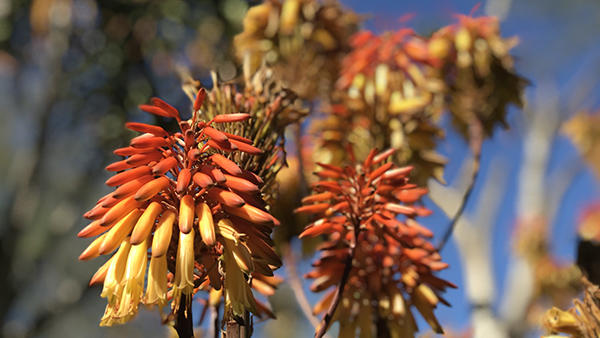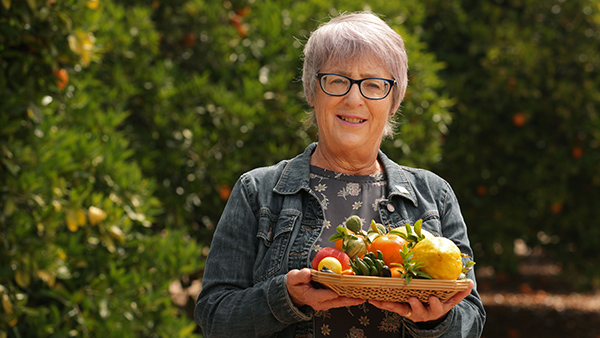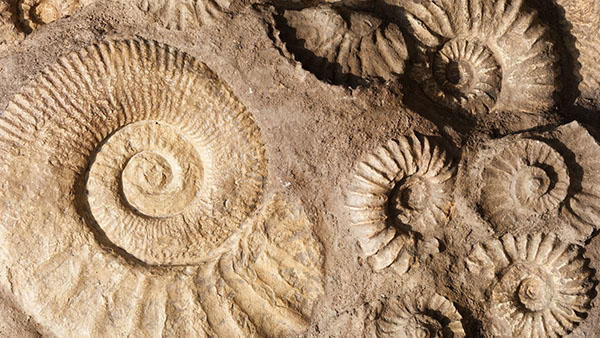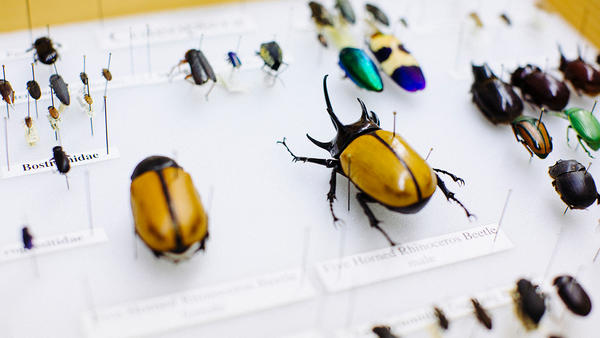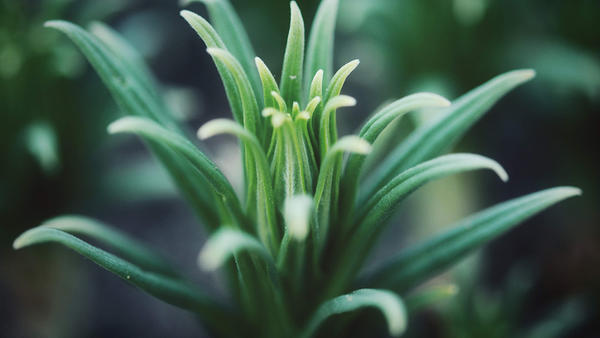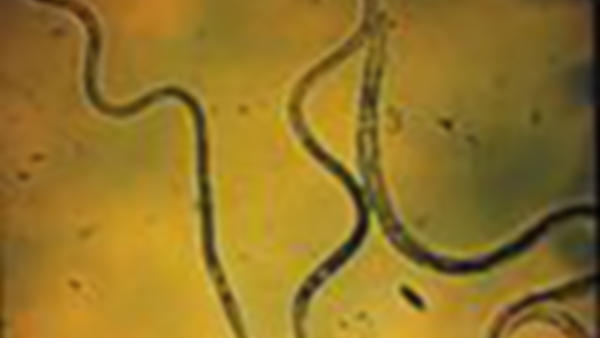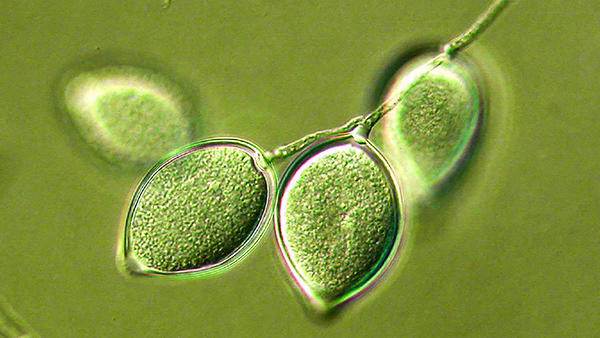Collections
UCR Botanic Gardens
The UCR Botanic Gardens is a living museum with more than 3,500 plant species and thousands of specimens with a focus on plants from Mediterranean climate and arid lands. The Gardens are utilized for teaching, research, and demonstration purposes, as well as enjoyment and appreciation of nature. Numerous engagement activities are offered each year including plant sales, classes and workshops, tours and walks, and an annual fundraiser. The Gardens are supported by an active Friends of the Botanic Gardens membership group and hundreds of volunteers from the campus and community.
Citrus Variety Collection
The Citrus Variety Collection is one of the most diverse and extensive living collections of citrus globally encompassing 4500 trees and represents more than 1,000 accessions of citrus and citrus relatives. Each year the Collection is used as a resource for outreach through field days such as the UCR Citrus Day and is visited by numerous groups including citrus growers, industry representatives, and government agencies. The Collection is also utilized by a number of research and extension faculties at UCR to extend knowledge on Citrus and other genera in the Aurantioideae family.
Earth and Planetary Sciences Research Museum
Earth Sciences collections curates several worldwide collections including ~100,000 fossils of invertebrates, vertebrates, plants, and several thousand minerals and rocks. All of these are essential resources for research, outreach, and teaching. The collection includes type specimens available to UCR faculty and graduate students as well as to researchers and other institutions worldwide.
Entomology Research Museum
The second oldest collection of insects and related arthropods in the UC system, the Entomology Research Museum got its start in 1923 and has since grown to include some 3 million specimens. The main focus of the collection is insect biodiversity of southern California and southwestern North America. Of particular importance are major collections of native bees and natural enemies of agricultural pests (used in biological control worldwide). This resource is used by researchers from around the world. The museum also houses collections for teaching and for outreach activities in the communities surrounding UCR.
Herbarium
The Herbarium is California's 5th largest herbarium containing over 223,000 specimens of vascular plants and lichens. It serves as an important source of information for the regional community of academic researchers, private biological consulting firms, farmers, and other individuals involved with plants. The Herbarium makes thousands of specimen identifications each year and is an active resource in teaching and research at UCR as well as nationally and internationally.
Nematode Collection
The UCR Nematode Collection comprises ~370,000 mounted specimens and thousands of original types. To the discipline of nematology, the UCR Nematode Collection is among the largest and most important collections in the world. In academics, the Collection has a solid track record of attracting graduate students and visitors from around the world. It is also well known for supporting undergraduate and graduate level research at UCR. In addition to supporting UCR researchers, the Collection is also the basis for international NSF-supported summer workshops at UCR. Tools that are developed in these workshops support teaching nematology worldwide.
World Phytophthora Genetic Resource Collection
The World Phytophthora Genetic Resource Collection at UCR contains about 15,000 isolates representing over 110 described species and many undescribed taxa. These isolates are from worldwide sources and a wide range of hosts. The collection is the only truly global resource for research on Phytophthora, one of the most devastating plant pathogens on the planet. The collection is now the only remaining comprehensive collection of genetic diversity representative of this extremely important group of plant pathogens. The collection includes a genetically diverse collection of about 2,000 isolates of P. infestans, cause of late blight of both potatoes and tomatoes.
View the Center for Integrative Biological Collections




